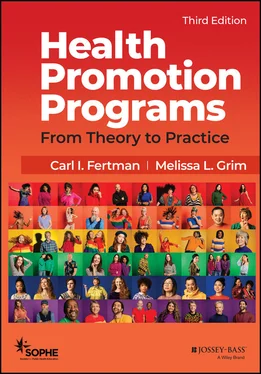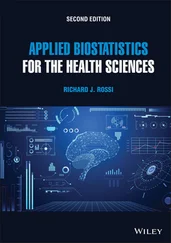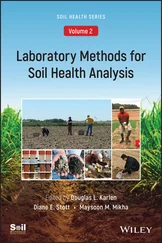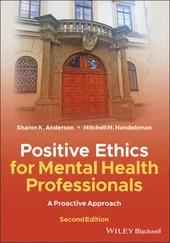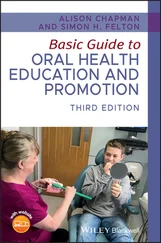(SOPHE) Society for Public Health Education - Health Promotion Programs
Здесь есть возможность читать онлайн «(SOPHE) Society for Public Health Education - Health Promotion Programs» — ознакомительный отрывок электронной книги совершенно бесплатно, а после прочтения отрывка купить полную версию. В некоторых случаях можно слушать аудио, скачать через торрент в формате fb2 и присутствует краткое содержание. Жанр: unrecognised, на английском языке. Описание произведения, (предисловие) а так же отзывы посетителей доступны на портале библиотеки ЛибКат.
- Название:Health Promotion Programs
- Автор:
- Жанр:
- Год:неизвестен
- ISBN:нет данных
- Рейтинг книги:5 / 5. Голосов: 1
-
Избранное:Добавить в избранное
- Отзывы:
-
Ваша оценка:
- 100
- 1
- 2
- 3
- 4
- 5
Health Promotion Programs: краткое содержание, описание и аннотация
Предлагаем к чтению аннотацию, описание, краткое содержание или предисловие (зависит от того, что написал сам автор книги «Health Promotion Programs»). Если вы не нашли необходимую информацию о книге — напишите в комментариях, мы постараемся отыскать её.
Health Promotion Programs: From Theory to Practice
Health Promotion Programs: From Theory to Practice
Health Promotion Programs — читать онлайн ознакомительный отрывок
Ниже представлен текст книги, разбитый по страницам. Система сохранения места последней прочитанной страницы, позволяет с удобством читать онлайн бесплатно книгу «Health Promotion Programs», без необходимости каждый раз заново искать на чём Вы остановились. Поставьте закладку, и сможете в любой момент перейти на страницу, на которой закончили чтение.
Интервал:
Закладка:
We acknowledge and recognize Diane Allensworth, who served as co-editor for the first and second editions. Diane’s early and continuous support of the book made the difference in the decision to publish the book. We appreciate her commitment and vision for health promotion programs in all places people live, work, study, play, and worship.
We thank the current and past chapter authors as well as their supporting organizations and families. We recognize the School of Education, University of Pittsburgh and College of Education and Human Development, Radford University for their support and effort on behalf of the text.
We appreciate and acknowledge the hundreds of SOPHE members and the SOPHE staff and board members who work to promote people’s health worldwide. Thank you.
Carl I. Fertman
Pittsburgh, Pennsylvania
Melissa L. Grim
Radford, Virginia
January 2022
ABOUT THE COMPANION WEBSITE
This book is accompanied by a companion website. www.wiley.com\go\fertman\healthpromotionprograms3e
The website includes for use in the classroom, for students’ self-reflection and for online courses:
Lectures PowerPoint slides
Chapter test banks
Case studies
Planning health promotion program course project model
Cross-reference to NCHES competencies
Tables, figures and sidebars from the book in PDF form
CHAPTER 1 WHAT ARE HEALTH PROMOTION PROGRAMS?
Carl I. Fertman, Melissa L. Grim, and M. Elaine Auld
LEARNING OBJECTIVES
Understand health promotion in a new decade in a new health era.
Define health and health promotion, and describe the role of health promotion in fostering good health and quality of life.
Summarize the key historical developments in health promotion over the last century.
Compare and contrast health education and health promotion.
Describe the nature and advantages of each health promotion program setting and identify health promotion program stakeholders.
Discuss the forces shaping the new emerging era of health promotion.
Health Promotion in a New Health Era
In 2020 the new decade opened with COVID-19 ushering in a new health era with a new context for health, health promotion, and health promotion programs. The public paid attention to COVID-19. Fear was rampant. COVID-19 caused the public to be anxious and afraid. Hope about vaccines, drugs, and cures was high. The pandemic showed the power of actions at multiple levels by individuals, groups, healthcare systems, community human service organizations, businesses, schools, colleges and universities, and governments to combat the virus. The actions span from individual behaviors to governmental policies and legislation—hand washing, social distancing, and self-quarantine combined with stay-at-home orders and travel restrictions. Businesses made employee and customer health promotion and safety a priority. The actions had clear health outcomes that impacted individuals and whole populations of people and communitiesacross the globe.
Conversely, the lack of action and delays to address the virus, to promote and protect health, had pervasive and negative, if not fatal, consequences for individuals and whole populations of people. The balance between health and economic systems was tested and debated, providing a context for action. Promoting and protecting health was laid bare at the intersection of health and economic status, with all sectors of the economy impacted by the virus, but with different economic groups and communities experiencing the virus in distinct and different ways. The lack of social justiceand health equityadded to the COVID-19 burden that many individuals and communities were already experiencing.
COVID-19 is a brutal exclamation point to America’s pervasive ill health. Americans with obesity, diabetes, heart disease, and other diet-related diseases were three times more likely to suffer worsened outcomes from COVID-19, including death. Had we flattened the still-rising curves of these conditions, it is quite possible that our fight against the virus would have looked very different. The need for health promotion programs is greater than ever.
In the new health era, health promotion is about so much more than about healthcare, where the focus is on tertiary prevention —improving the quality of life and reducing symptoms of a disease you already have (Figure 1.1). Health promotion is about factors outside the traditional boundaries of healthcare—health behaviors (tobacco use, sexual activity), social and economic factors (employment, education, income), and physical environment (air quality, water quality). These three combined (i.e. policies, programs, and health factors) are linked to 80 percent of the health outcomes to impact and improve length and quality of life (University of Wisconsin Public Health Institute & Robert Woods Johnson Foundation, 2021).

Figure 1.1 Health promotion is associated with more than just healthcare to impact health outcomes linked to length and quality of life
Source : Modified from Population Health Management: Systems and Success, UWPHI & Robert Woods Johnson Foundation, 2020. © 2020, University of Wisconsin Public Health Institute & Robert Woods Johnson Foundation.
Health promotion programs are designed, implemented, and evaluated in complex and complicated dynamic environments. They are multifaceted and multi-leveled. We work directly with people trying to figure out how to best address their health needs. We work in schools, colleges and universities, communities, workplaces, and healthcare organizations. At the same time, we are surrounded by forces greater than any organization and group of individuals. The result is that processes of planning, implementing, and evaluating health promotion programs unfold in a nonlinear progression of small steps forward and sometime a couple steps backward. It is dynamic.
Health, Health Promotion, and Health Promotion Programs
Health promotion and health promotion programs are rooted in the World Health Organization’s (1947) definition of health as “a state of complete physical, mental and social well-being, and not merely the absence of disease or infirmity.” While most of us can identify when we are sick or have some infirmity, identifying the characteristics of complete physical, mental, and social well-being is often a bit more difficult. What does complete physical, mental, and social well-being look like? How will we know when or if we arrive at that state?
In 1986, the first International Conference of Health Promotion, held in Ottawa, Canada, issued the Ottawa Charter for Health Promotion , which defined health in a broader perspective: “health has been considered less as an abstract state and more as a means to an end which can be expressed in functional terms as a resource which permits people to lead an individually, socially, and economically productive life” (World Health Organization, 1986). Accordingly, health in this view is a resource for everyday life, not the object of living. It is a positive concept emphasizing social and personal resources as well as physical capabilities.
Arnold and Breen (2006) identified the characteristics of health not only as well-being but also as a balanced state, growth, functionality, wholeness, transcendence, and empowerment and as a resource. Perhaps the view of health as a balanced state between the individual (host), agents (such as bacteria, viruses, and toxins), and the environment is one of the most familiar. Most individuals can readily understand that occasionally the host-agent interaction becomes unbalanced and the host (the individual) no longer is able to ward off the agent (for example, when bacteria overcome a person’s natural defenses, making the individual sick).
Читать дальшеИнтервал:
Закладка:
Похожие книги на «Health Promotion Programs»
Представляем Вашему вниманию похожие книги на «Health Promotion Programs» списком для выбора. Мы отобрали схожую по названию и смыслу литературу в надежде предоставить читателям больше вариантов отыскать новые, интересные, ещё непрочитанные произведения.
Обсуждение, отзывы о книге «Health Promotion Programs» и просто собственные мнения читателей. Оставьте ваши комментарии, напишите, что Вы думаете о произведении, его смысле или главных героях. Укажите что конкретно понравилось, а что нет, и почему Вы так считаете.
